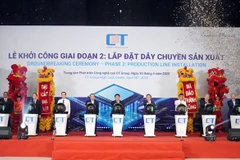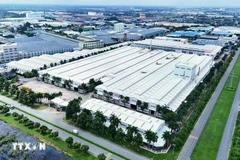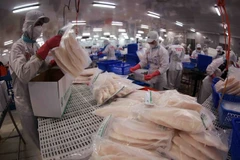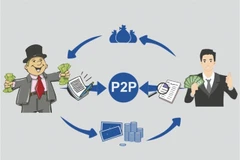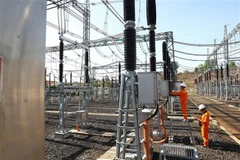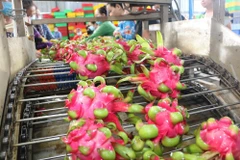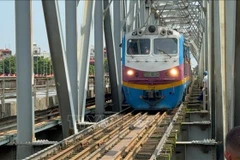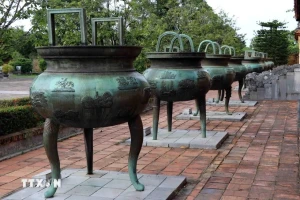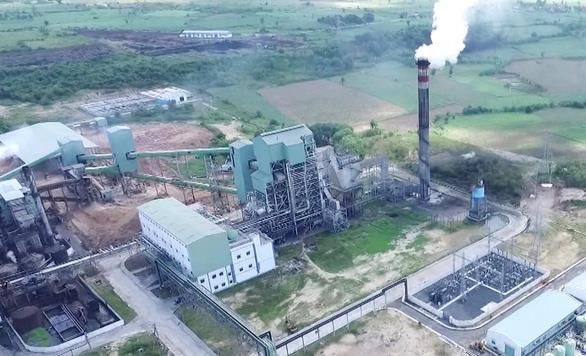 A power plant uses bagasse from a sugar factory to produce electricity in Phu Yen Province.
A power plant uses bagasse from a sugar factory to produce electricity in Phu Yen Province. (Photo: tuoitre.vn)
Phu Yen (VNS/VNA) - More than 10,000sugarcane–farm households in the central province of Phu Yenare earning higher profits thanks to the use of bagasse from a sugarfactory to produce electricity.
The factory owned by KCP Vietnam IndustriesLimited (KCP VIL) has bought sugarcane from farmers in theprovince at a price 100,000 VND (4.3 USD) per tonne higher than the market rate.
Many sugarcane farmers in the country have turned to growcassava because of the low price of sugarcane.
Gia Lai and Phu Yen provinces are among thelocalities with the largest areas of sugarcane inthe country, with more than 60,000ha.
In mid-March, the market price of raw sugarcane was 720,000VND to 760,000 VND (31-33 USD) per tonne.
However, sugarcane farmers in Phu Hoa, Son Hoa and DongXuan districts in Phu Yen province are selling their product for 820,000-860,000VND (35.3-37 USD) per tonne.
Ro Cham Y Nem, a sugarcane farmer in Son Hoa district, said that hehad sold 40ha of sugarcane to KCP VIL for 840,000 VND (36.2 USD) pertonne.
“Fertiliser is given to sugarcane farming households thathave signed supply contracts with the company,” a farmer in the district, DangVan Sam, said.
The company is also offering 3.5 million VND (150 USD) eachto farming households that do not currently grow sugarcane if they switch tothe crop.
K.V.S.R. Subbaiah, general director of KCP VIL, told TuoiTre newspaper that his company produces both sugar andbiomass electricity.
Built in 2016 with a total investment of 23 million USD, the 30MW biomasspower plant needs about 300,000 tonnes of bagasse a crop (around fourmonths worth).
In 2017, it supplied more than 49 million Kwh ofelectricity and reached 108 million Kwh of electricity last year, generatingpower for the national power grid.
“With revenue from selling electricity to Electricityof Vietnam (EVN), the company shares its profit with farmers to help themplant sugarcane,” he said.
The renewable energy supply from theKCP VIL biomass power plant contributes to 10 per cent of theprovince’s energy use, according to Thai Minh Chau, director of theprovincial power company.
“This power source is very importantto ensure energy security, and to meet increasedpower demand as well as insufficient power in the dryseason,” he said.
The sugar factory has been using bagasse for three years,the deputy chairman of provincial People’s Committee, Tran Huu The, said.
“While many sugar producers are facingdifficulties with low prices and farmers in other localities have leftsugarcane farming to switch to cassava, farmers in Phu Yen province aregrowing lots of sugarcane thanks to purchasing contracts with KCPVIL,” he said.
The model is expected to help develop the country’ssugarcane industry and compete with rivals such as Thailand, he added.
The province plans to organise a workshop topropose increasing the price of power that uses bagasse toencourage sugar companies to invest in biomass power plants.
Production of power using biomass is not new to Vietnam,but the price is low, so investors are notinterested, Subbaiah said.
In Thailand, biomass electricity produced from bagasseat sugar mills sells for around 13 US cents per kWh,while the EVN buys it at 1,220 VND (5.8 US cents) per kWh from KCPVIL, he said.
“We have repeatedly petitioned the Government to increasethe purchasing price of biomass electricity to encourage businesses to investin biomass power plants. This would help the domestic sugar industry.”
Vietnam’s energy demand and biomass electricity prices areexpected to increase, so the company plans to build onemore biomass power plant with a designed capacity of 30MW.
However, the construction of a new biomass power plant willdepend on preferential policies.-VNS/VNA













